Abstract
In Finnish lakes and rivers used as water supplies, mesophilic fungi and actinomycetes were common, whereas thermophilic fungi and actinomycetes were present only in low concentrations. Fungi and actinomycetes were more abundant in eutrophic and mesotrophic lakes than in oligotrophic lakes. River water contained more thermophilic actinomycetes and fungi and mesophilic actinomycetes than did lake water. Runoff from soil seemed to be an important factor contributing to the incidence of these microbes in water. Chemical coagulation removed actinomycetes and fungi efficiently, but sand filtration allowed their passage. Disinfection could not prevent actinomycetes and fungi from reaching the distribution system. During infiltration in the production of recharged groundwater, mesophilic actinomycetes could even multiply appreciably.
Full text
PDF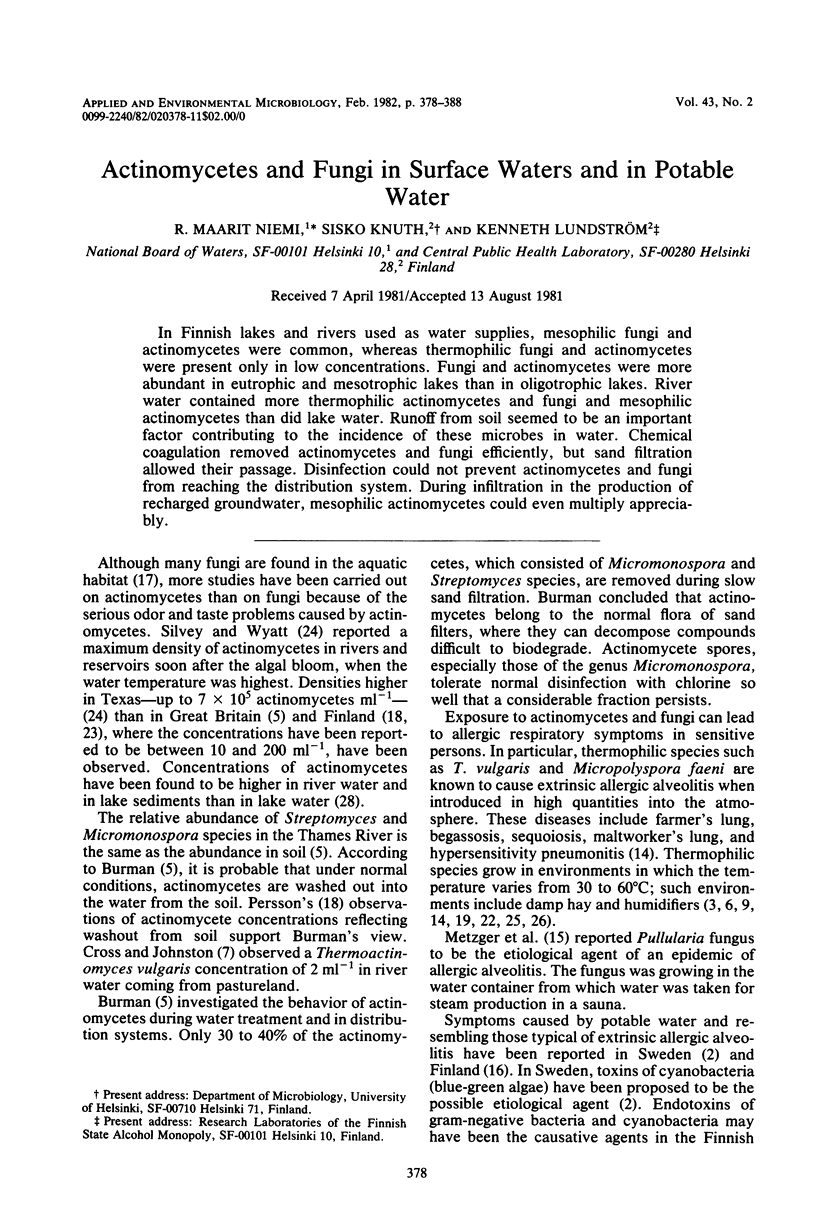
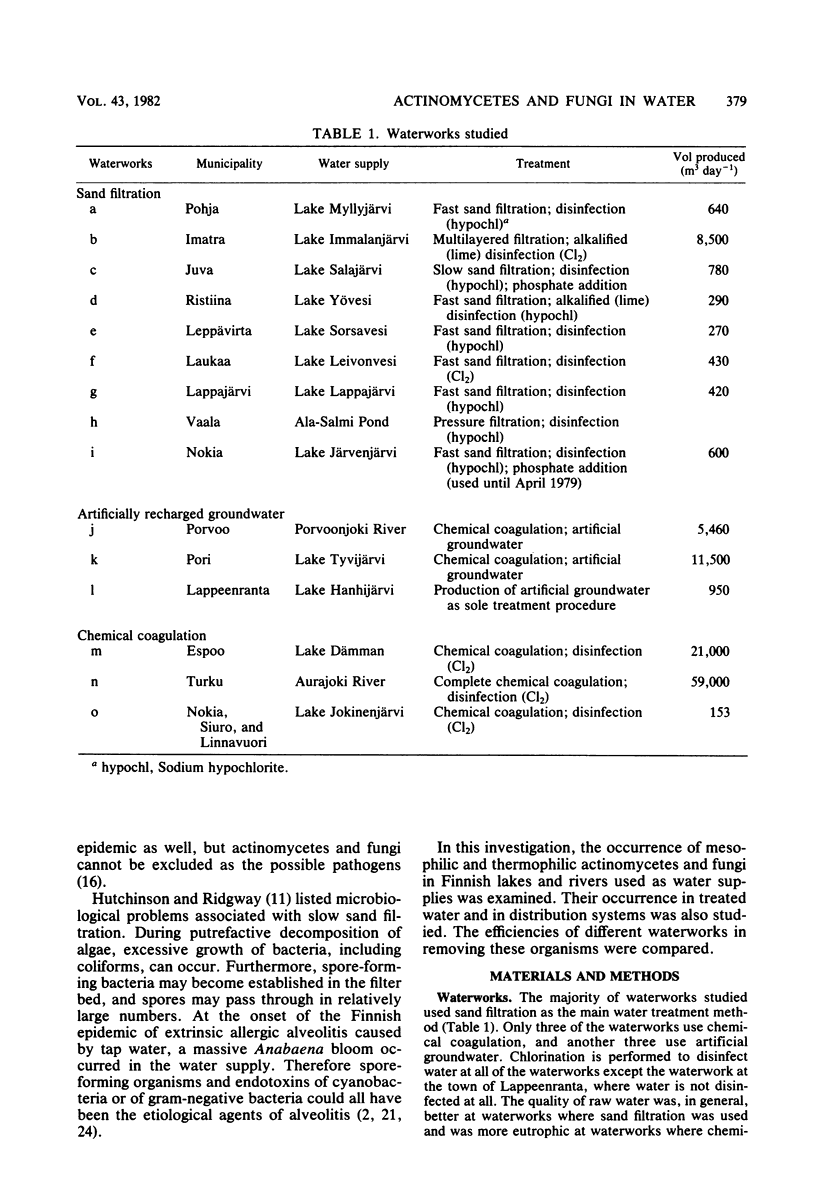
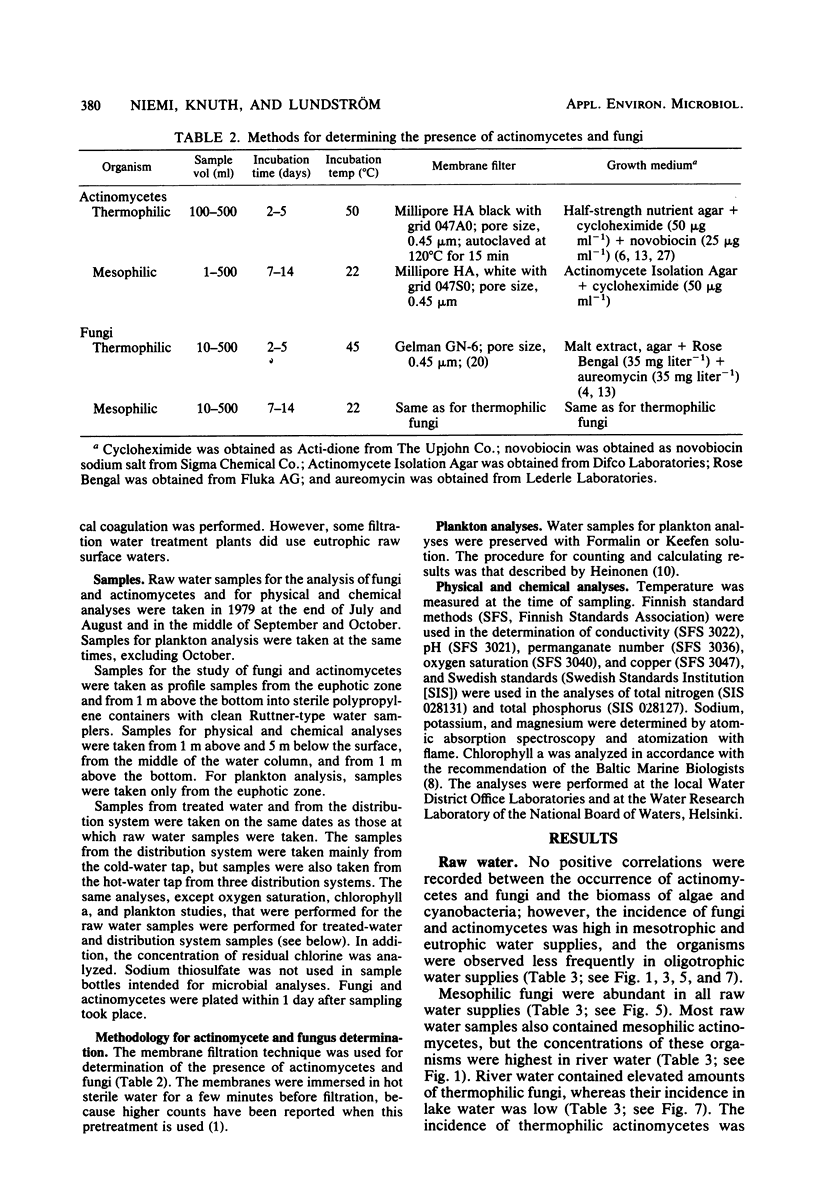

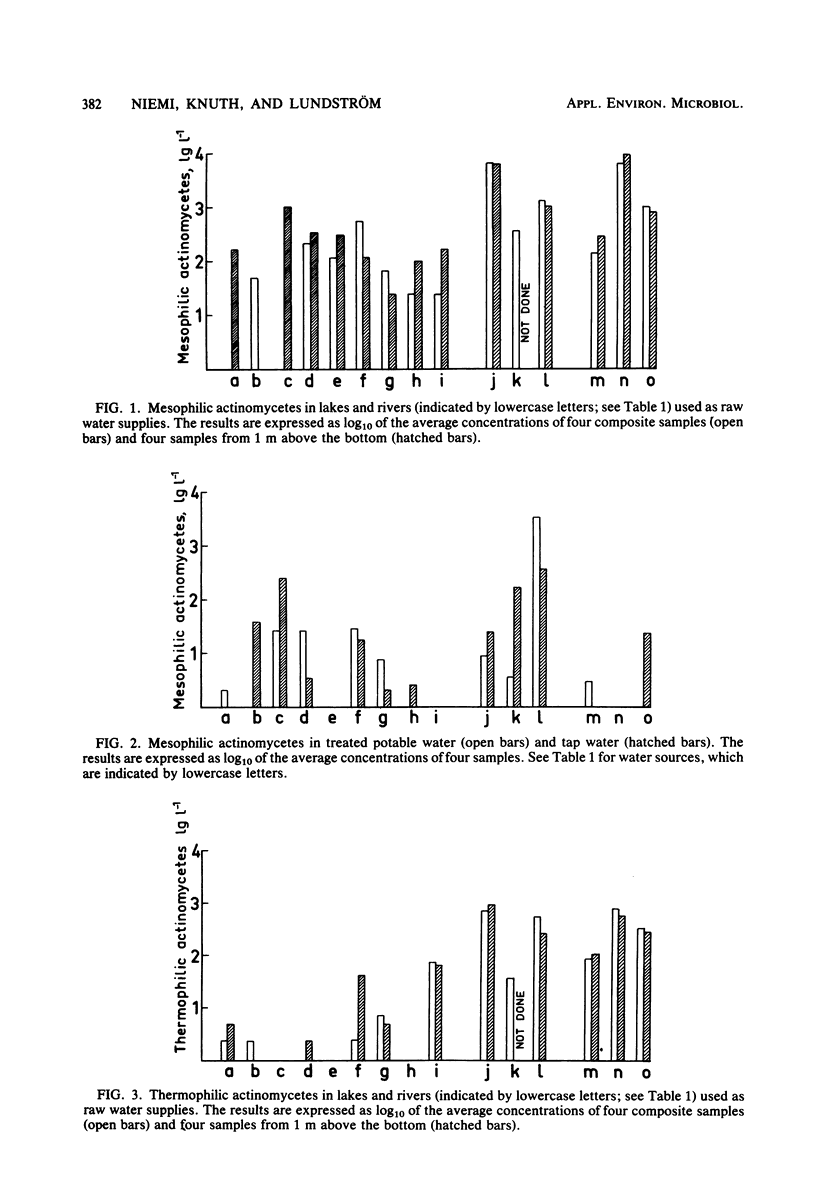
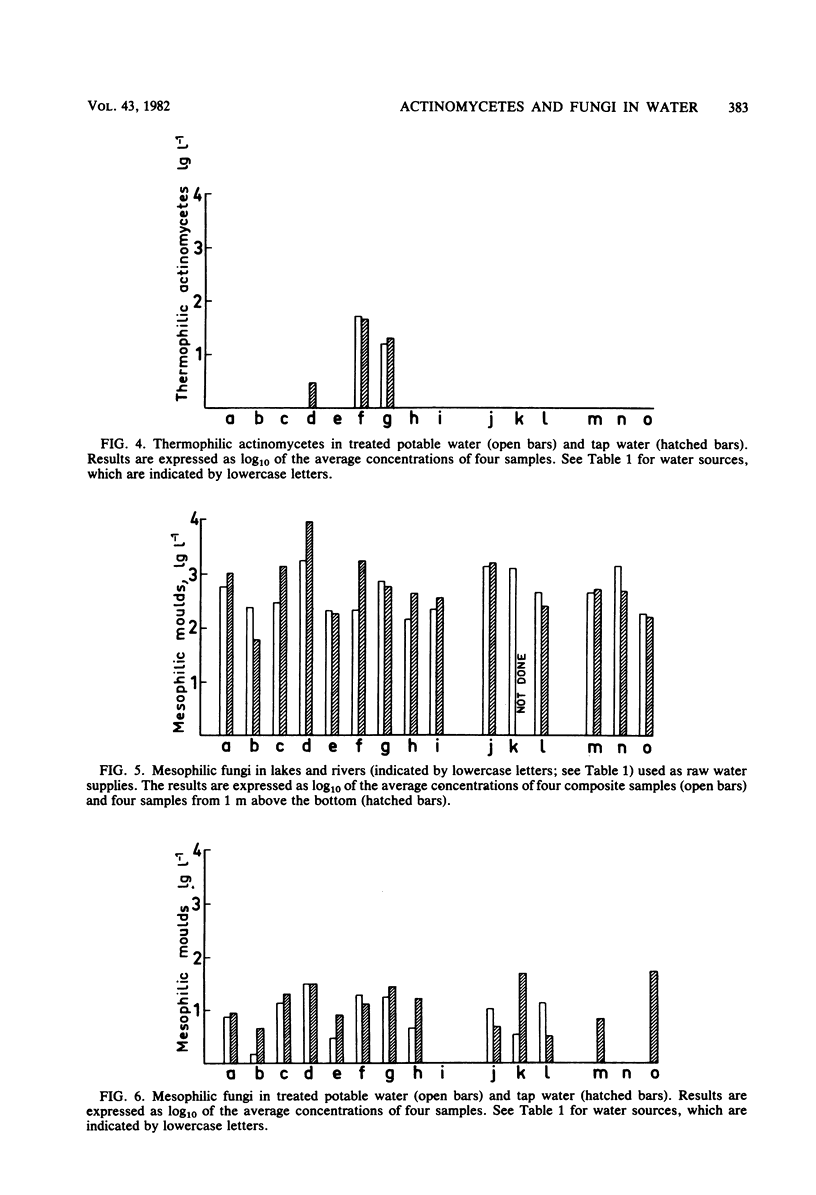


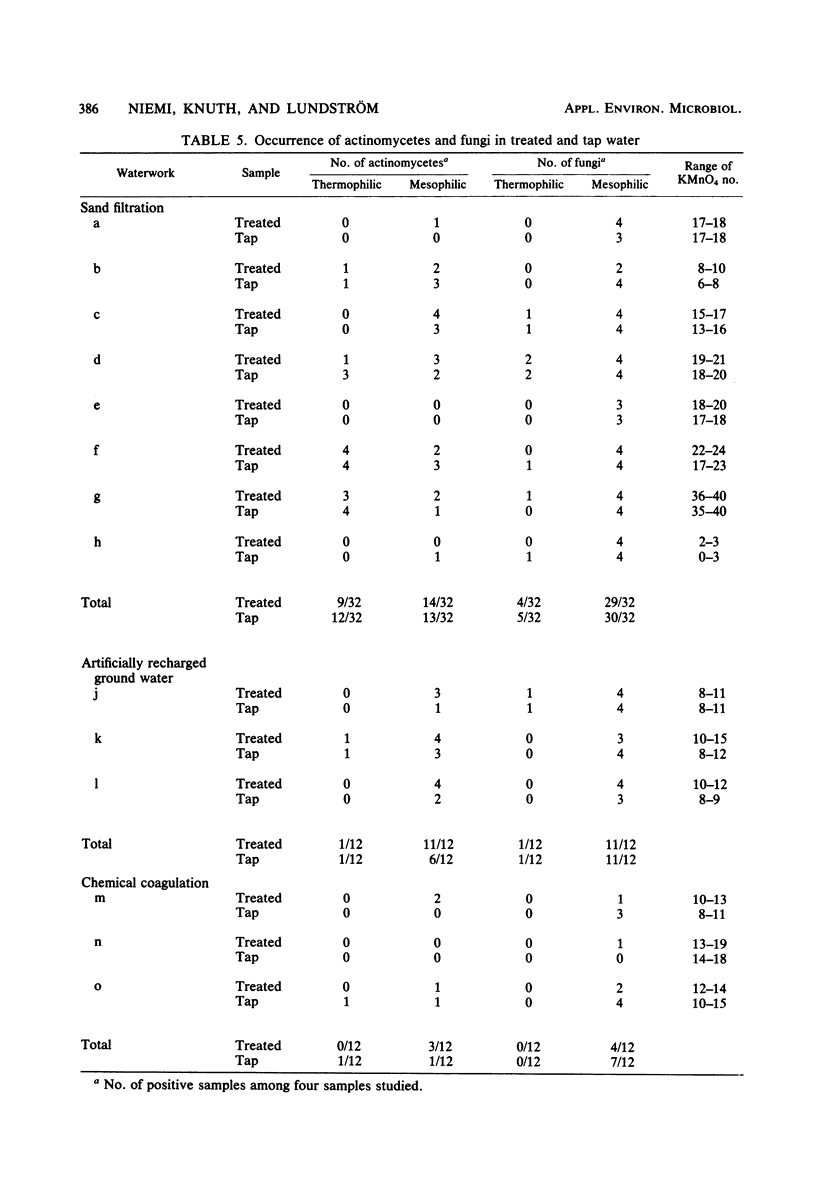
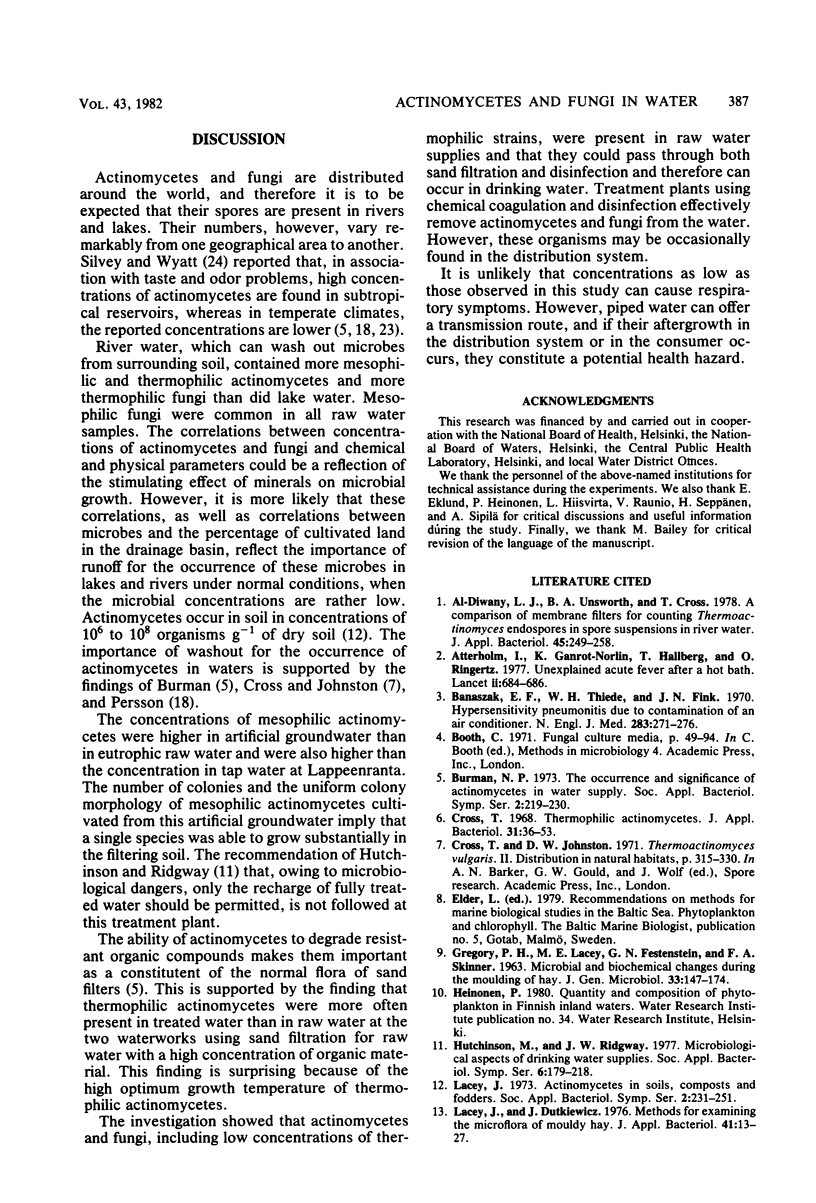
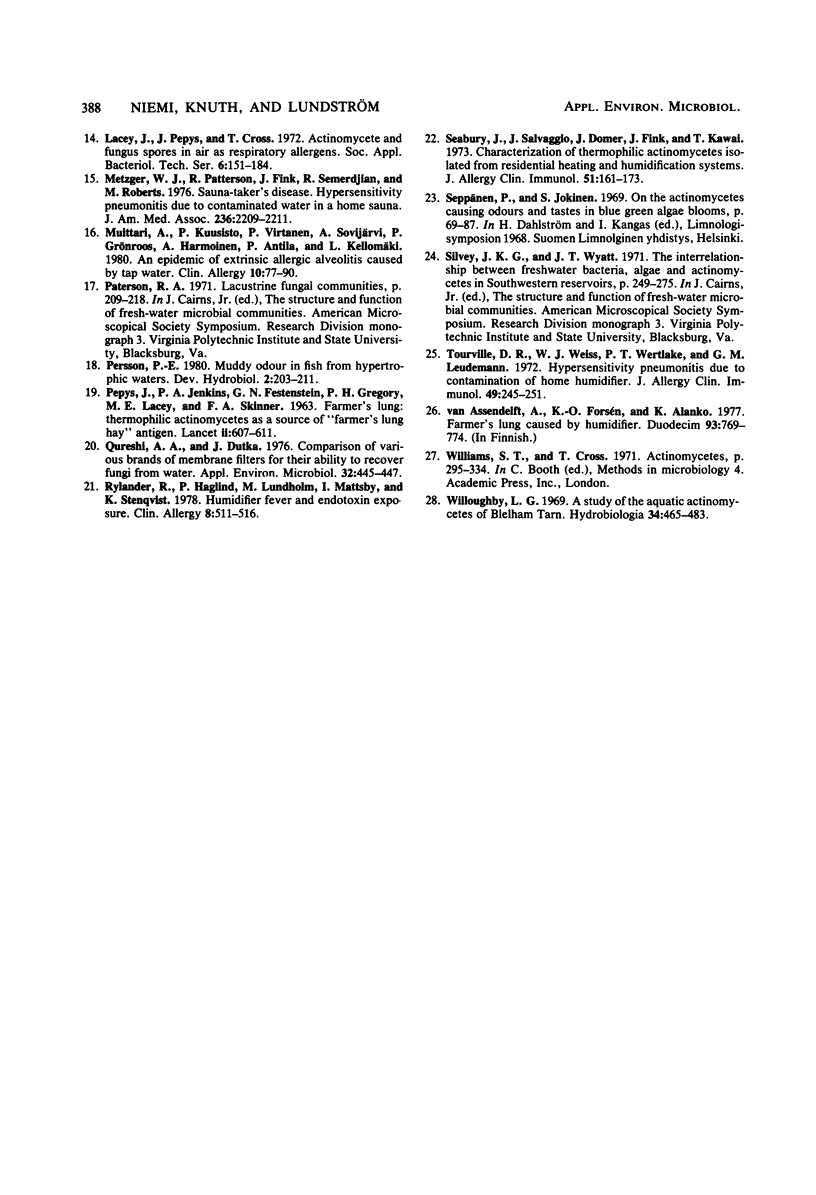
Selected References
These references are in PubMed. This may not be the complete list of references from this article.
- Atterholm I., Ganrot-Norlin K., Hallberg T., Ringertz O. Unexplained acute fever after a hot bath. Lancet. 1977 Oct 1;2(8040):684–686. doi: 10.1016/s0140-6736(77)90496-2. [DOI] [PubMed] [Google Scholar]
- Banaszak E. F., Thiede W. H., Fink J. N. Hypersensitivity pneumonitis due to contamination of an air conditioner. N Engl J Med. 1970 Aug 6;283(6):271–276. doi: 10.1056/NEJM197008062830601. [DOI] [PubMed] [Google Scholar]
- Burman N. P. The occurrence and significance of actinomycetes in water supply. Soc Appl Bacteriol Symp Ser. 1973 Jan;2:219–230. [PubMed] [Google Scholar]
- Cross T. Thermophilic actinomycetes. J Appl Bacteriol. 1968 Mar;31(1):36–53. doi: 10.1111/j.1365-2672.1968.tb00339.x. [DOI] [PubMed] [Google Scholar]
- Lacey J. Actinomycetes in soils, composts and fodders. Soc Appl Bacteriol Symp Ser. 1973 Jan;2:231–251. [PubMed] [Google Scholar]
- Metzger W. J., Patterson R., Fink J., Semerdjian R., Roberts M. Sauna-takers disease. Hypersensitivity pneumonitis due to contaminated water in a home sauna. JAMA. 1976 Nov 8;236(19):2209–2211. doi: 10.1001/jama.236.19.2209. [DOI] [PubMed] [Google Scholar]
- Muittari A., Kuusisto P., Virtanen P., Sovijärvi A., Grönroos P., Harmoinen A., Antila P., Kellomäki L. An epidemic of extrinsic allergic alveolitis caused by tap water. Clin Allergy. 1980 Jan;10(1):77–90. doi: 10.1111/j.1365-2222.1980.tb02083.x. [DOI] [PubMed] [Google Scholar]
- PEPYS J., JENKINS P. A., FESTENSTEIN G. N., GREGORY P. H., LACEY M. E., SKINNER F. A. FARMER'S LUNG. THERMOPHILIC ACTINOMYCETES AS A SOURCE OF "FARMER'S LUNG HAY" ANTIGEN. Lancet. 1963 Sep 21;2(7308):607–611. doi: 10.1016/s0140-6736(63)90398-2. [DOI] [PubMed] [Google Scholar]
- Qureshi A. A., Dutka B. J. Comparison of various brands of membrane filters for their ability to recover fungi from water. Appl Environ Microbiol. 1976 Sep;32(3):445–447. doi: 10.1128/aem.32.3.445-447.1976. [DOI] [PMC free article] [PubMed] [Google Scholar]
- Rylander R., Haglind P., Lundholm M., Mattsby I., Stenqvist K. Humidifier fever and endotoxin exposure. Clin Allergy. 1978 Sep;8(5):511–516. doi: 10.1111/j.1365-2222.1978.tb01504.x. [DOI] [PubMed] [Google Scholar]
- Seabury J., Salvaggio J., Domer J., Fink J., Kawai T. Characterization of thermophilic actinomycetes isolated from residential heating and humidification systems. J Allergy Clin Immunol. 1973 Mar;51(3):161–173. doi: 10.1016/0091-6749(73)90021-3. [DOI] [PubMed] [Google Scholar]
- Tourville D. R., Weiss W. I., Wertlake P. T., Leudemann G. M. Hypersensitivity pneumonitis due to contamination of home humidifier. J Allergy Clin Immunol. 1972 Apr;49(4):245–251. doi: 10.1016/0091-6749(72)90087-5. [DOI] [PubMed] [Google Scholar]


